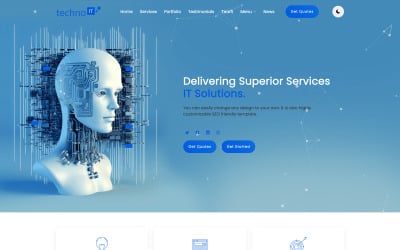Reasonably-Priced Website Design Packages for Startups
Reasonably-Priced Website Design Packages for Startups
Blog Article
Leading Tips for Creating an Impactful Website Layout That Converts
In today's digital landscape, the significance of an impactful website design can not be overstated, specifically when it involves converting visitors right into clients. To accomplish this, one must consider a range of elements, including comprehending the target market, focusing on individual experience, and maximizing for mobile systems. The strategic usage of compelling call-to-actions and a distinct aesthetic power structure plays a critical duty in leading customers with their journey. As we check out these essential elements, it becomes noticeable that the success of your internet site depends upon more than just looks; it needs a thoughtful method to style and performance.

Understand Your Target Target Market
Understanding your target market is basic to efficient website layout, as it lays the groundwork for creating an interesting user experience. Recognizing who your individuals are, including their demographics, preferences, and actions, allows designers to customize the website's web content, layout, and capability to satisfy certain needs.
Performing extensive market research is critical in this process. Studies, interviews, and analytics can supply valuable insights right into user assumptions and discomfort points. By assembling this information, designers can develop individual personas that stand for various sections of the target market, guaranteeing that design choices are educated and appropriate.
Additionally, comprehending the target market aids in picking ideal style elements such as color schemes, typography, and images that resonate with customers. A web site that speaks directly to its target market cultivates a sense of connection and depend on, encouraging longer brows through and higher conversion rates.
Ultimately, a user-centered approach to website style not only enhances customer complete satisfaction however additionally supports service goals by driving involvement and loyalty. By focusing on the requirements and preferences of the target audience, a site can effectively offer its purpose and accomplish preferred outcomes.
Prioritize Individual Experience
To improve the general efficiency of an internet site, prioritizing customer experience (UX) is important (Website Design). A well-designed UX ensures that visitors can navigate the site effortlessly, locate details quickly, and engage with content meaningfully. This causes boosted individual fulfillment and higher conversion rates
Begin by executing intuitive navigation. Menus must be practically structured, enabling individuals to find key locations of the website with marginal initiative. Consistency in design components, such as shade systems and typefaces, promotes knowledge, which is crucial for maintaining user involvement.
Furthermore, think about the filling speed of your website. A delay of simply a few secs can cause significant drop-offs, as individuals are much less most likely to wait for a slow-loading page. Enhancing images and maximizing code can improve performance and maintain site visitors.
In addition, clearness in content discussion is vital. Use concise, engaging language and damage up text with visuals to boost readability. By prioritizing user experience, you not just develop an extra delightful setting for visitors however also strengthen your brand's integrity. Ultimately, a focus on UX is a financial investment in the long-term success of your website.
Optimize for Mobile Devices
Optimizing for smart phones is critical in today's digital landscape, where a boosting variety of customers accessibility web sites via smartphones and tablets. A mobile-friendly design not just enhances individual experience yet likewise plays a significant role in improving internet search engine positions. To attain this, it is necessary to take on a responsive style that automatically adjusts to numerous screen dimensions and orientations.

Loading speed is another crucial factor; mobile users are normally much less individual and expect fast accessibility to information. By focusing on mobile optimization, you ensure that your site continues to be competitive and efficiently involves a wider audience.
Usage Compelling Call-to-Actions
A website's efficiency frequently hinges on its ability to lead site visitors toward desired activities, making compelling call-to-actions (CTAs) vital components of design. CTAs function as the pivotal factors that direct users to involve with the site, whether that indicates buying, signing up for a newsletter, or downloading and install a source.
To produce efficient CTAs, quality is critical. Usage concise language that plainly interacts the action you want the individual to take.
In addition, consider making use of directional signs, such as arrows or photos, to direct customers toward these buttons. By concentrating on these components, businesses can substantially improve user interaction, driving conversions and ultimately attaining their site's objectives.
Focus on Visual Power Structure
Reliable internet site design relies heavily on a well-structured visual pecking order that guides customers through material perfectly. By arranging aspects in a way that focuses on information, developers can boost user experience and facilitate decision-making. This involves using dimension, shade, contrast, and spacing strategically to draw interest to my sources the most crucial components of a webpage.
Using larger fonts for headings and subheadings establishes a clear difference between different areas, allowing individuals to check content effortlessly. In addition, using contrasting shades for switches and calls-to-action can capture customer attention and motivate communication. Whitespace is one more necessary component; it protects against mess and enables individuals to concentrate on key messages without disturbances.
Photos and graphics ought to enhance the message while likewise adhering to the recognized hierarchy, enhancing the overall message (Website Design). Consistency in layout elements, such as shade schemes and typography, further enhances the aesthetic pecking order, making navigation user-friendly

Conclusion
In conclusion, reliable site design necessitates an extensive Website understanding of the target audience, prioritization of individual experience, and mobile optimization. Inevitably, a well-executed website style serves as a vital part in driving customer actions and attaining service objectives.
Report this page